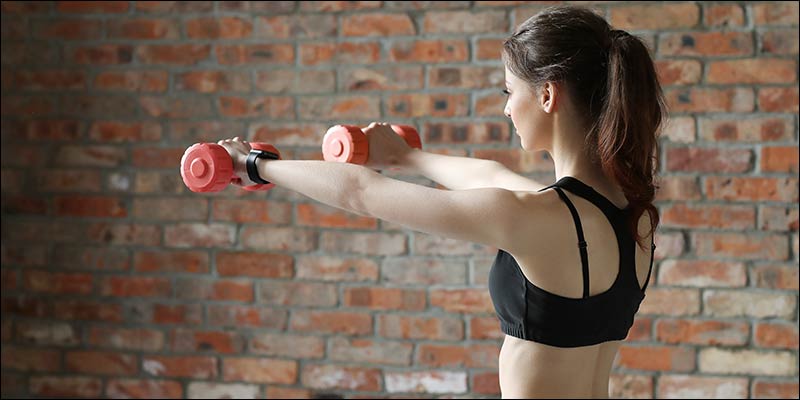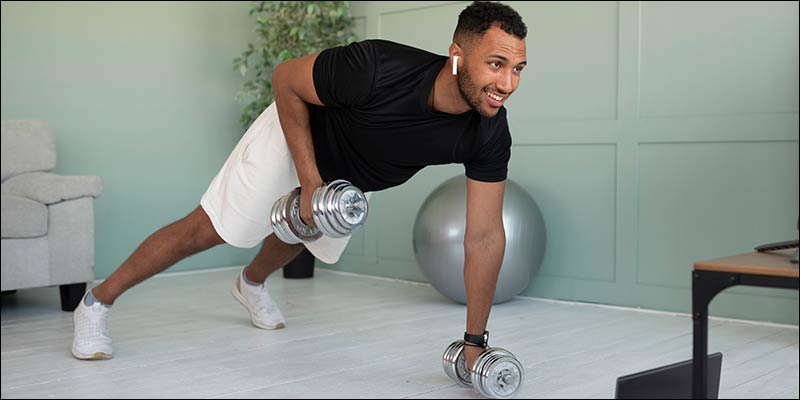Dumbbell pull exercises are a versatile and effective way to build strength and improve your overall fitness. Whether you’re a beginner or an experienced lifter, incorporating dumbbell pull exercises into your workout routine can yield impressive results. In this comprehensive guide, we’ll explore the various aspects of dumbbell pull exercises, from their benefits to proper form, muscle groups worked, and much more.
What are Pull Exercises?
Benefits of Dumbbell Pull Exercises
Dumbbell pull exercises offer a wide array of advantages for those seeking to enhance their upper body strength and appearance. Let’s delve into some of the key benefits:
Increased Strength
Dumbbell exercises target multiple muscle groups, helping you develop functional strength that can be applied in various daily activities.
Improved Posture
These exercises engage your back and shoulder muscles, promoting better posture and reducing the risk of back pain.
Enhanced Muscle Definition
Regularly performing dumbbell pull exercises can lead to more defined back, shoulder, and arm muscles.
Versatility
You can perform these exercises at home or in the gym, as they require minimal equipment.
Enhanced Back Strength
These exercises are known for their ability to strengthen the back muscles, especially the latissimus dorsi. A strong back is essential for good posture and overall functional fitness.
Best Dumbbell Pull Exercises

Dumbbell Curls
Dumbbell curls are among the initial exercises that come to mind when considering pull exercises with weights. This workout targets the biceps and forearms, offering benefits such as enhanced grip strength and improved upper body aesthetics.
Single-Arm Dumbbell Rows
The single-arm dumbbell row is a beneficial exercise that primarily focuses on engaging the muscles in the back, such as the lats, rhomboids, and traps, along with the biceps and forearms. This exercise offers advantages such as enhanced posture and heightened back strength.
Renegade Rows
Renegade rows present a demanding workout targeting the upper back, shoulders, and core muscles. This exercise also engages the abs and contributes to improving core stability.
Dumbbell Deadlifts
The dumbbell deadlift is a compound exercise primarily focusing on the muscles in the lower body, especially the hamstrings, glutes, and quadriceps. It stands out as one of the few exercises in this lineup capable of simultaneously developing your leg muscles.
Dumbbell Pull-Overs
The dumbbell pullover is a workout that predominantly works the muscles of the upper body, specifically targeting the chest, lats, and triceps. During this exercise, it is important to maintain stability in your spine and hips while allowing mobility in your shoulders.
Dumbbell Shrugs
Dumbbell shrugs are a popular exercise designed to target the upper trapezius muscles in the back and the levator scapulae muscles in the neck. Additionally, this exercise allows you to engage the lats while enhancing shoulder stability.
Proper Form and Technique
To maximize the benefits of dumbbell pull exercises and prevent injury, it’s crucial to maintain proper form. Focus on keeping your back straight, shoulders relaxed, and core engaged while performing these exercises.
Targeted Muscle Groups
Latissimus Dorsi
These exercises primarily target the latissimus dorsi, commonly referred to as the “lats.” These are the large muscles responsible for the V-shape appearance in the back.
Rhomboids
The rhomboids are engaged during exercises like bent over rows, contributing to upper back strength and stability.
Trapezius
The trapezius muscles, located in the upper back and neck, are also worked during these exercises, leading to improved posture and upper body aesthetics.
Common Mistakes to Avoid
While these exercises offer numerous benefits, there are common mistakes to avoid. These include using improper form, lifting too heavy, and neglecting warm-up and cool-down routines. Make sure to educate yourself on the dos and don’ts to reap the maximum rewards safely.
Dumbbell Pull Exercises at Home

The Dumbbell Pull Exercises routine concentrates on utilizing dumbbell workouts suitable for home use, targeting crucial muscle groups in your upper body and back. Incorporate this routine into your weekly regimen, aiming for at least one session to enhance strength and define muscles. Prior to beginning, ensure a warm-up phase comprising 5-10 minutes of light cardio and dynamic stretches to prime your body for the workout.
Variations for All Fitness Levels
Beginner Exercises
If you’re new to these exercises, start with lighter weights and focus on mastering proper form. Bent over rows and single-arm rows are great options for beginners.
Intermediate Exercises
As you progress, increase the weight and consider exercises like dumbbell pull-overs to challenge your muscles further.
Advanced Exercises
For those with advanced fitness levels, renegade rows and other complex variations can provide a rigorous workout.
Incorporating Dumbbell Pull Exercises into Your Routine
Including dumbbell pull exercises in your workout routine can be highly beneficial. These exercises can be performed on their own or incorporated into your existing strength training regimen.
Dumbbell Pull Workouts
To help you get started, here are a couple of sample dumbbell pull workouts:
- Beginner Workout: A 3-set routine of bent over rows and single-arm dumbbell rows.
- Intermediate Workout: Incorporate dumbbell pull-overs for a challenging workout.
Combining Dumbbell Pulls with Other Exercises
This exercises can be combined with other upper body workouts to create a comprehensive routine. You can include push-ups, pull-ups, and dumbbell presses to target different muscle groups effectively.
Equipment Needed
All you need to get started with exercises is a pair of dumbbells. Make sure to choose a weight that challenges you but still allows you to maintain proper form.
Safety and Precautions
While this exercises can be incredibly beneficial, safety should always come first. Start with lighter weights, and consult a fitness professional if you have any concerns about your form or technique.
Nutrition and Recovery
A balanced diet and adequate rest are essential to support your muscle growth and recovery. Ensure you’re getting enough protein and nutrients to fuel your workouts and help your muscles repair and grow.
Real-Life Success Stories
Hearing about real-life success stories can be motivating. Many individuals have transformed their bodies and improved their overall fitness through consistent dumbbell pull exercises.
Conclusion
Dumbbell pull exercises are a fantastic way to strengthen and sculpt your upper body. Whether you’re a beginner or an experienced fitness enthusiast, these exercises offer a versatile and effective way to achieve your fitness goals. So, grab your dumbbells, focus on your form, and start your journey to a stronger, more defined upper body.
FAQs
Q1. Are dumbbell pull exercises suitable for women?
Absolutely! Dumbbell exercises are beneficial for both men and women looking to enhance their upper body strength and appearance.
Q2. How often should I perform dumbbell pull exercises?
The frequency of these exercises depends on your fitness goals, but 2-3 times a week is a good starting point.
Q3. Can I use other equipment instead of dumbbells?
While dumbbells are a popular choice, you can also use resistance bands or kettlebells for similar exercises.
Q4. What is the recommended rest time between sets?
Rest times can vary, but 30-60 seconds between sets is a good guideline for most people.
Q5. Do I need a spotter for dumbbell pull exercises?
Generally, this exercises can be performed without a spotter, but it’s always a good idea to have someone nearby for safety, especially when lifting heavy weights.

